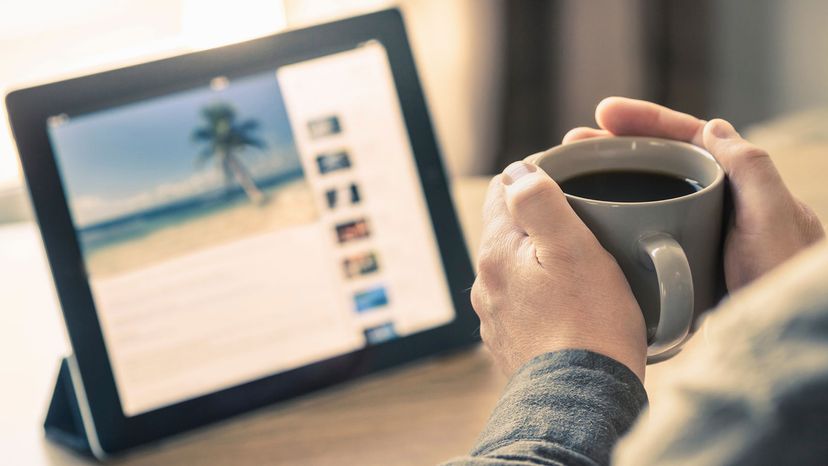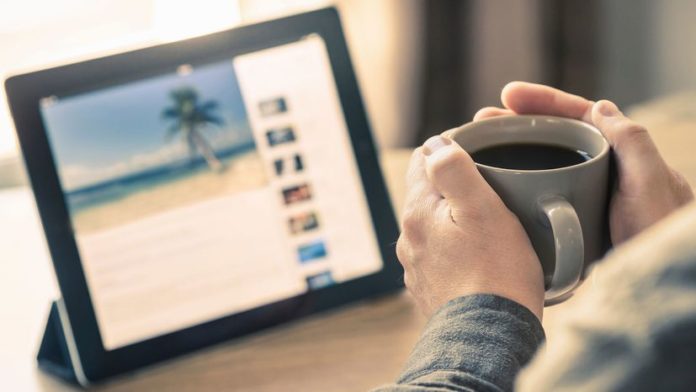 “Too many photos and emails on your computer, phone or "in the cloud" can be stressful. Dan Brownsword/Getty Images
“Too many photos and emails on your computer, phone or "in the cloud" can be stressful. Dan Brownsword/Getty Images
At last count, my wife and I have more than 12,000 photos and 1,300 videos in our two iCloud storage accounts, plus thousands of more family photos and movies scattered across a half dozen external hard drives that may or may not be functional. I have two active email accounts with a total of more than 28,000 read messages and 6,000 unread messages. I am the owner of two free Google Drive accounts, each with a 15 gigabyte capacity, plus 2 terabytes of iCloud storage that I paid for at some point and have no idea why.
I am, in other words, typical. According to a 2018 paper from Monash University in Australia, the average modern man and woman has access to 3.7 terabytes of digital storage space, either on a physical device or in the cloud. In 2017 alone, we human beings took an estimated 4.7 trillion photos on our smartphones, and Facebook uploads 300 million digital photos every day at a clip of 136,000 per second.
Powered by the availability of cheap, nearly infinite digital storage space, and an insatiable appetite for recording and sharing the minutiae of our daily lives, the digital detritus is piling up at an alarming rate. If all of our digital photos, music files, unread emails and ancient PDFs were physical objects, then we would all deserve our very own episode of "Hoarders."
In fact, there’s growing speculation in psychological research circles that our collective digital hoarding of countless pics, video clips and emails may produce some of the same negative effects as the real-world hoarding of old newspapers, expired cans of food and cats.
Traditional hoarding disorder, first recognized as a distinct mental illness in 2013, is believed to affect 4 to 5 percent of the global population, according to the Monash University paper. The Diagnostic and Statistical Manual of Mental Disorders (DSM-5) defines hoarding disorder by several criteria, including:
- persistent difficulty discarding possessions, regardless of actual value
- urge to save items and distress associated with discarding them
- accumulation of possessions that renders living spaces unusable due to congestion and clutter
- hoarding behavior that causes "significant clinical distress" and impairment of social and work life, and poses a safety hazard
The authors of the Monash University paper, define digital hoarding along similar lines, minus the physical menace of a house brimming with trash. "Digital hoarding," they write in the study, "is defined as the acquisition of and failure to discard or effectively manage digital content regardless of its use, leading to the accumulation of digital clutter."
Digital Hoarding Versus Real-world Hoarding
Digital hoarding is nowhere close to becoming a diagnosable mental illness like traditional hoarding disorder, but if further research establishes that digital clutter is just as damaging as the real thing, the co-authors write, it could affect "a large percentage of the world’s population, leading to substantial psychological illnesses, social problems and economic losses."
Clearly, there are some big differences between digital and real-world hoarding. No matter how many digital files you amass, they will never pose a physical risk to your health and well-being like a precariously towering stack of newspapers or a pile of rotting garbage in the living room.
But psychology professor Liz Sillence and her colleagues at Northumbria University in the UK found that digital hoarding can be psychologically and emotionally distressing in its own right. For a 2018 paper, Sillence and her fellow researchers asked a group of 45 adults about their digital hoarding habits and identified clear signs of stress and anxiety triggered by the runaway accumulation of emails, photos, work files and more.
One participant described her growing digital hoard as "stressful. Although not actually taking up physical space, it ‘feels’ clutter like."
Another described the difficulty of trashing old files. "It would be really hard for me to delete any documents, music or photographs. Particularly photos, I love my pictures, they are one of the devices I use to pick myself up is to look over past photographs whilst listening to music. To delete any of the above would be really unnerving for me because there is a feeling of the data being lost forever."
This emotional connection with digital files is a source of both comfort and anxiety, explains Sillence, much in the same way that traditional hoarders place emotional value on items that others classify as trash.
"I think the relationship we can have with our ‘digital stuff’ can be complex," writes Sillence in an email. "Even if people felt they didn’t look through their photos or songs very often, simply knowing they were there and they could look through them if they wanted to was comforting. The idea that they might have to get rid of everything or the idea that one day it might just be gone because of some sort of computer glitch caused most people to feel quite stressed."
The study participants also identified a second type of stress associated with unmanageable amounts of digital files, particularly at work. A disorganized inbox or hard drive cost them productivity, which added to their anxiety.
"They felt overwhelmed, lacked a clear strategy for searching and felt that it was easy to get lost in their digital files," writes Sillence.
Both Sillence and the handful of other scientists who have explored the impact of digital hoarding believe we need much more research on its potential psychological impact. While it’s not likely to pose an acute mental health threat like traditional hoarding, the raw number of people affected by persistent levels of digital hoarding anxiety could be staggering.
Now That’s an Idea
Decluttering guru Marie Kondo has her own tricks for cleaning up your digital life, including a desktop folder named (what else?) "Spark Joy" and a weekly purge of her iPhone.










































